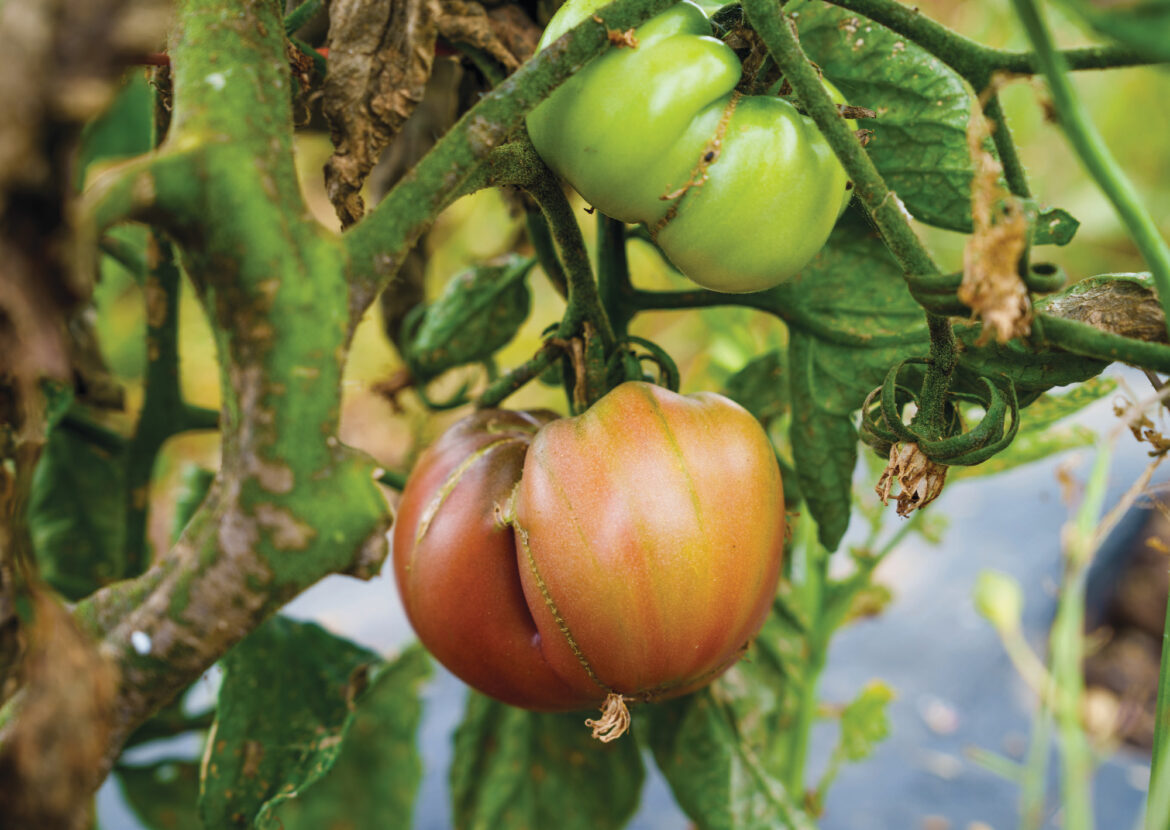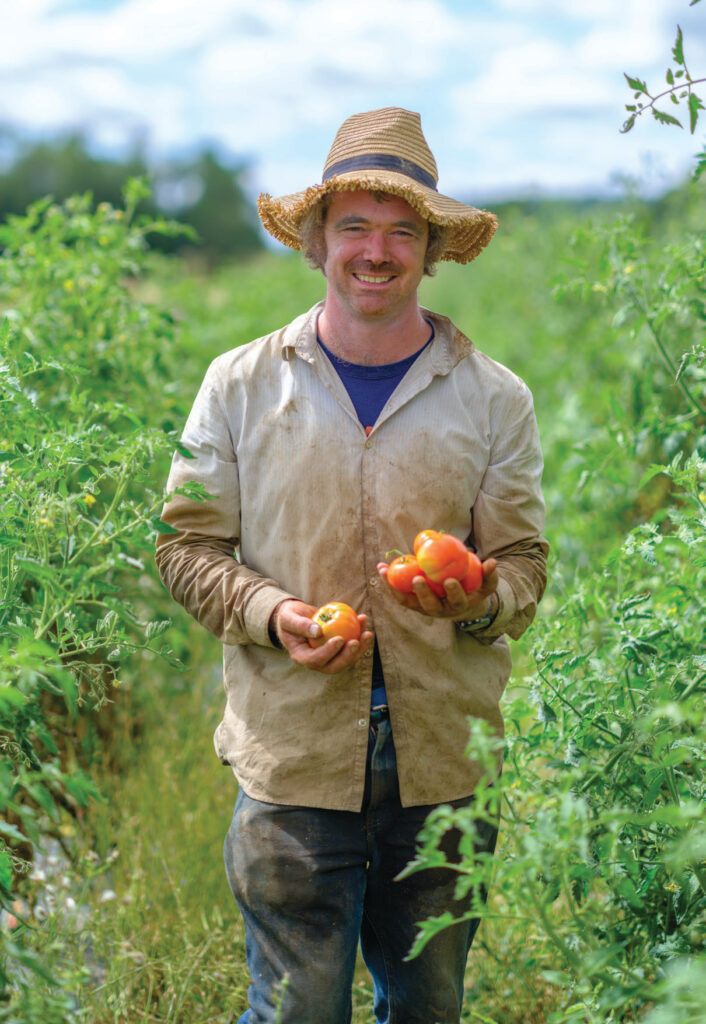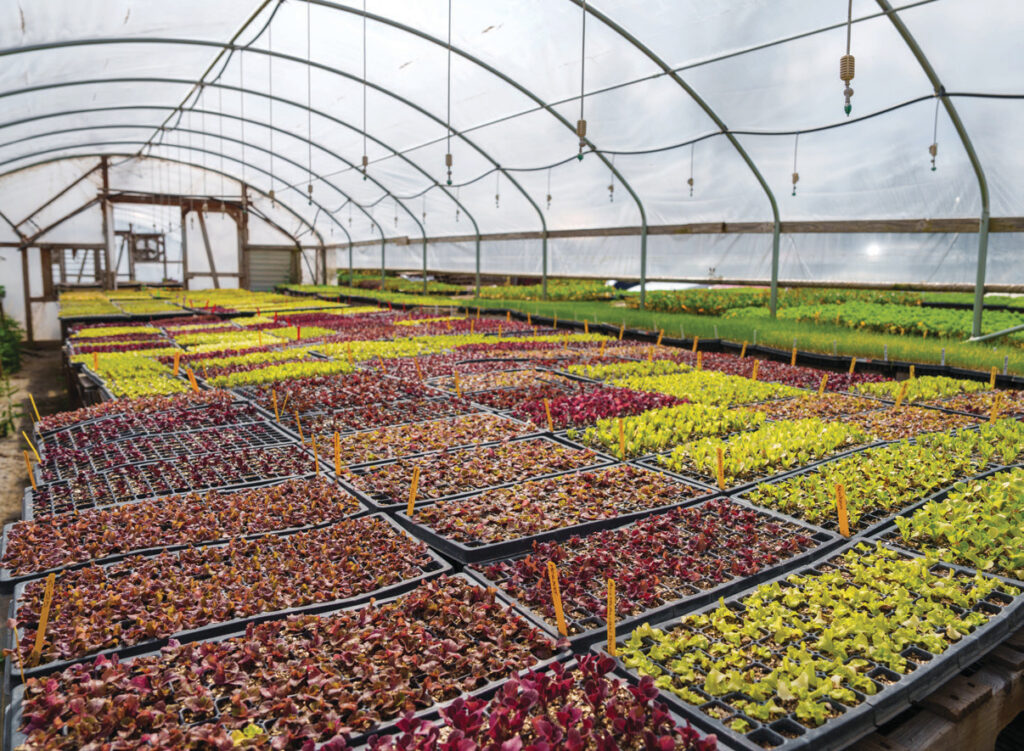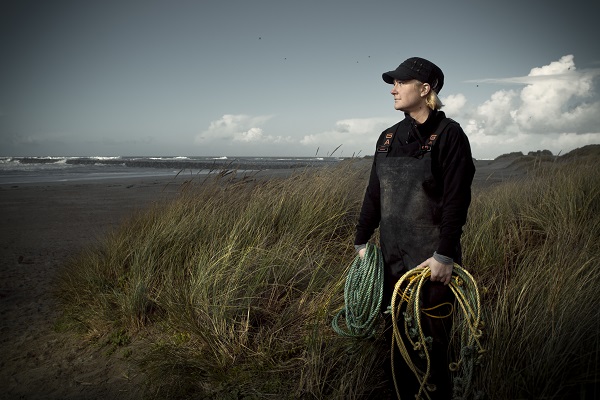Local is always best, but when it comes to eating tomatoes, sourcing is imperative
written by Julie Lee | photography by Dan Hawk
Locally grown tomatoes are nature’s delicate gift that loyalists wait for each season with held breath. Tomatoes also can be confusing; are they vegetable or fruit? Botanically speaking, tomatoes are fruits, bearing seeds and grown from a flowering plant, however from a culinary point of view, tomatoes are considered vegetables and counted as such by nutritionists as well. The United States Supreme Court even had a say, naming the tomato a vegetable in 1893 for taxation purposes.
There is also debate on whether the benefits of tomatoes, which include powerful cancer-fighting antioxidants, vitamin C and potassium, are best reaped when tomatoes are cooked or eaten raw. The lycopene found in tomatoes is at the center of this debate; a unique and powerful antioxidant plentiful in just a handful of foods, with a starring role in the fight against cancers including prostate and skin cancer, as well as heart disease and bone mass loss.
When tomatoes are cooked, lycopene amounts increase, as cooking breaks down the cell walls and releases. Crushing fresh raw tomatoes, as in salsa or gazpacho, is a way to get all the benefits without cooking them.
Any way you slice it, dishes starring tomatoes bridge from breakfast to dinner, and their uses are infinite—enjoyed in salads and sandwiches, sauces and snacks.
There are more than 15,000 known varieties of tomatoes. Beefsteak tomatoes are some of the largest varietals, with a meaty texture that fills a plate with juice when cut. Campari tomatoes are well known and in stores year-round. Many tomatoes are named after fruit: pear, plum, grape and cherry tomatoes among them.
Most would agree the star of the tomato show are heirloom tomatoes, flavor-packed treats that are found in boundless shapes, colors, and sizes, with Oregon bearing its own heirloom varietal, the Oregon Star tomato, a cross breed between Roma and Santiam varietals.
Local matters. While you can find tomatoes year-round in almost every grocery, those closest to home will hands down have the most flavor and color.
Aaron Nichols of Stoneboat Farm knows a thing or two about growing great tomatoes. The farm name, Stoneboat, comes from Aaron’s vision of building a floating boat of stone as a metaphor for starting a farm; stoneboat being “more of a sled than a boat,” he said.
Nichols is a farmer and chef, coming from a culinary background and seeking to produce the best quality vegetables to make exceptional food. He once worked at Fife Restaurant, one of the first farm to table restaurants in Portland, and he also had stops at Paley’s Place, Beyond and Laurelwood Brew Pub.
In his 20s, Nichols worked in New York at Franny’s, a farm to table venture where local produce came in from more than a six-hour drive radius. “I got to meet a lot of farmers there, ‘’ Nichols said, “but it’s not quite the same when the produce comes in on trucks.” This all inspired him to become the farm in “farm to table.”
Nichols first rented land, which took a few years to find. He also had his first child around the same time. “It was all kind of a blur back then,” he said.
The original plan was restaurant focused, but the pandemic had other ideas, so the emphasis shifted to a CSA, Community Supported Agriculture, which started with thirty families and quickly grew to 500. At first, he had two direct customers a week, which overnight became fifteen to twenty per day. His business is now 95 percent direct to consumer.
With a CSA, members are provided with vegetables all year long in exchange for an annual commitment. Members feel like part of the farm, celebrating and anguishing the successes and challenges of farming. Nichols considers his CSA families as his own, attending weddings and even providing members recipe ideas.
Stoneboat Farm uses trap cropping and predator attractant planting to deter bad bugs from gobbling up plants. Their pest control looks like rows of beautiful flowers instead of tanks of chemicals. They grow heirloom tomatoes, crossbreeding hybrids for the best flavor and texture, as well as beefsteak and cherry tomatoes. “We grow cherry tomatoes simply for the kids to pick for fun,” said Nichols.
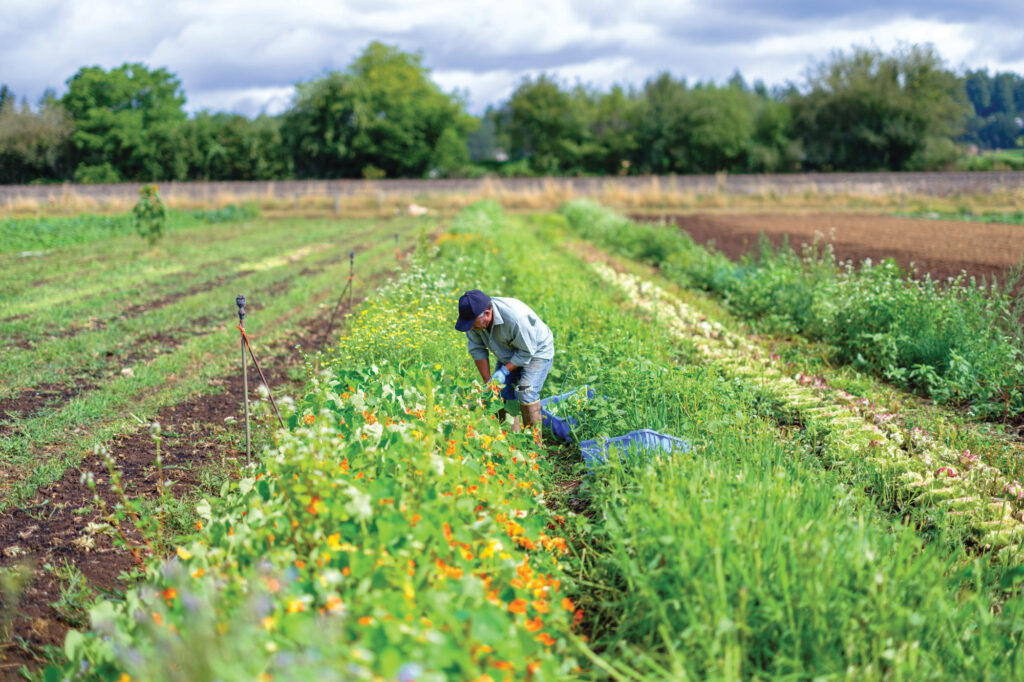
Quality is top of mind. Nichols keeps an eye on the prize. “Is it a good tomato? A good flavor? Can we transport easily?” he asks for each batch picked.
His favorite thing about farming is to see the people come through and pick up the produce, and the long-term vision is to keep the land in productive farming. “It’s going to become more important to feed people from the land around us locally,” said Nichols, “I love doing the CSA. We’ll always have some form of it—it stabilized and sustained us through the pandemic, and we enjoyed that we could all stand outside and talk at a safe distance when people were so isolated.”
“It feels like a community,” said Nichols, “the CSA is giving to us, and we give to them.”
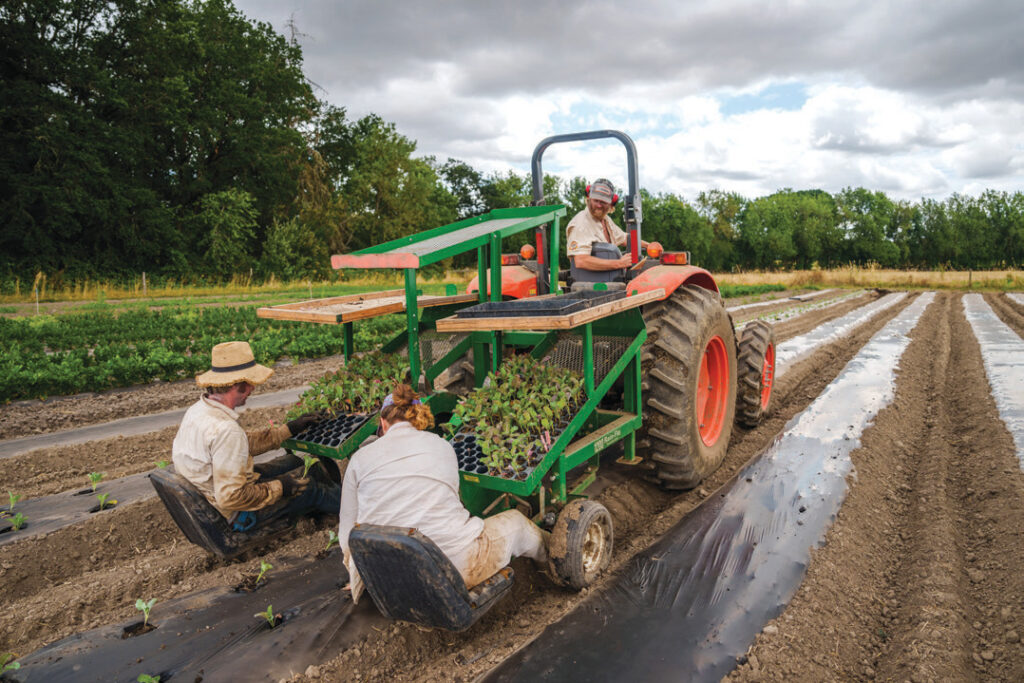
Arianna Lockwood, executive chef at The Fireside in Portland, loves cooking with tomatoes. “Tomatoes are nostalgic; they remind me of home,” she said, “being able to watch the tomato seed grow and waiting for the colors to turn until the bright red appears, finally being rewarded when pulling the perfectly ripe tomato from the vine. For all my favorite moments and memories, there was probably a tomato present somewhere!” Check out Lockwood’s recipe for Oeuf Mayonnaise on Tomato Toast.
Another tomato on toast idea comes from Zupan’s Markets with a delicious Tomatoes, Peaches & Burrata on Toast recipe.
And for a great way to eat raw tomatoes, Nichols shares his gazpacho recipe.

